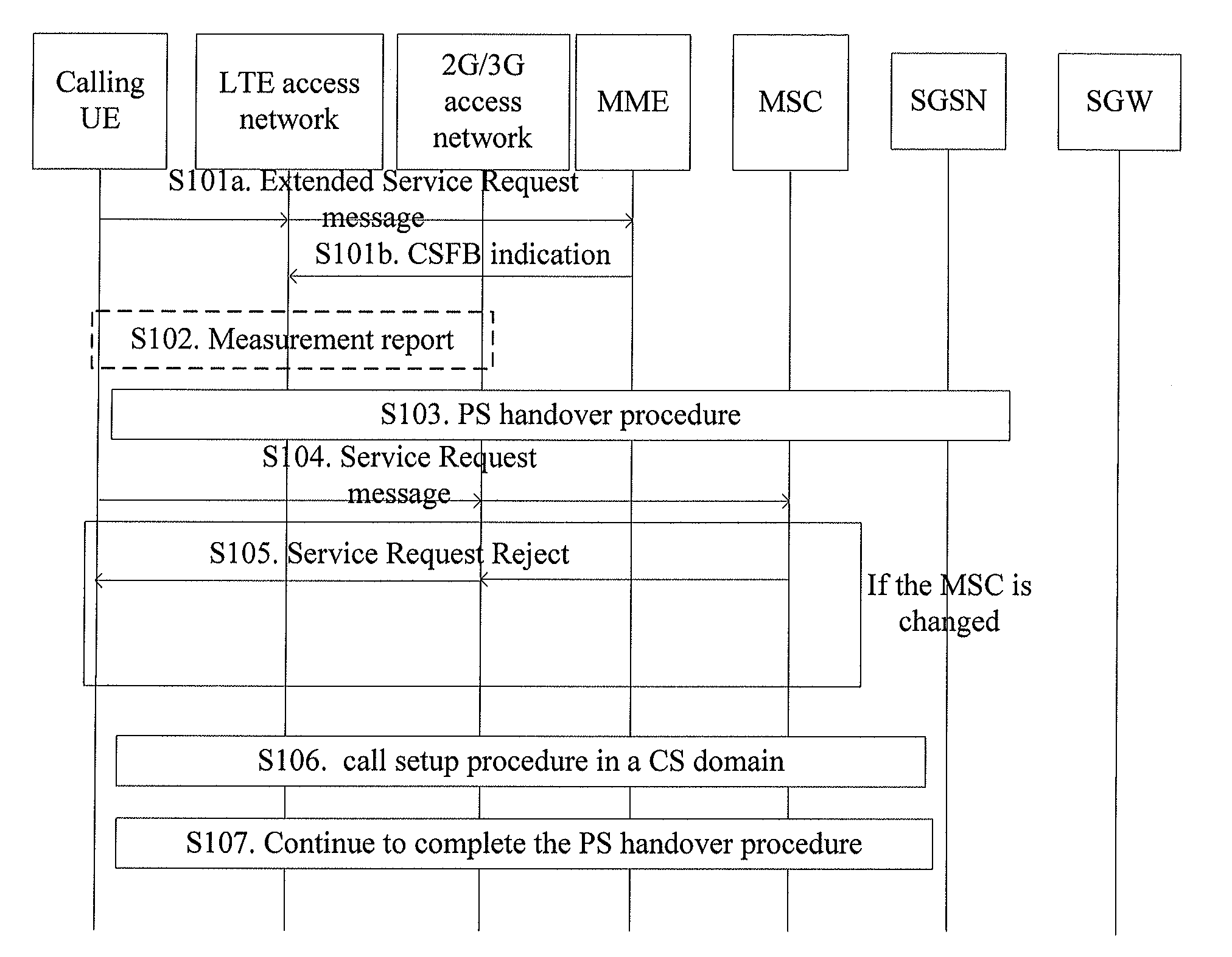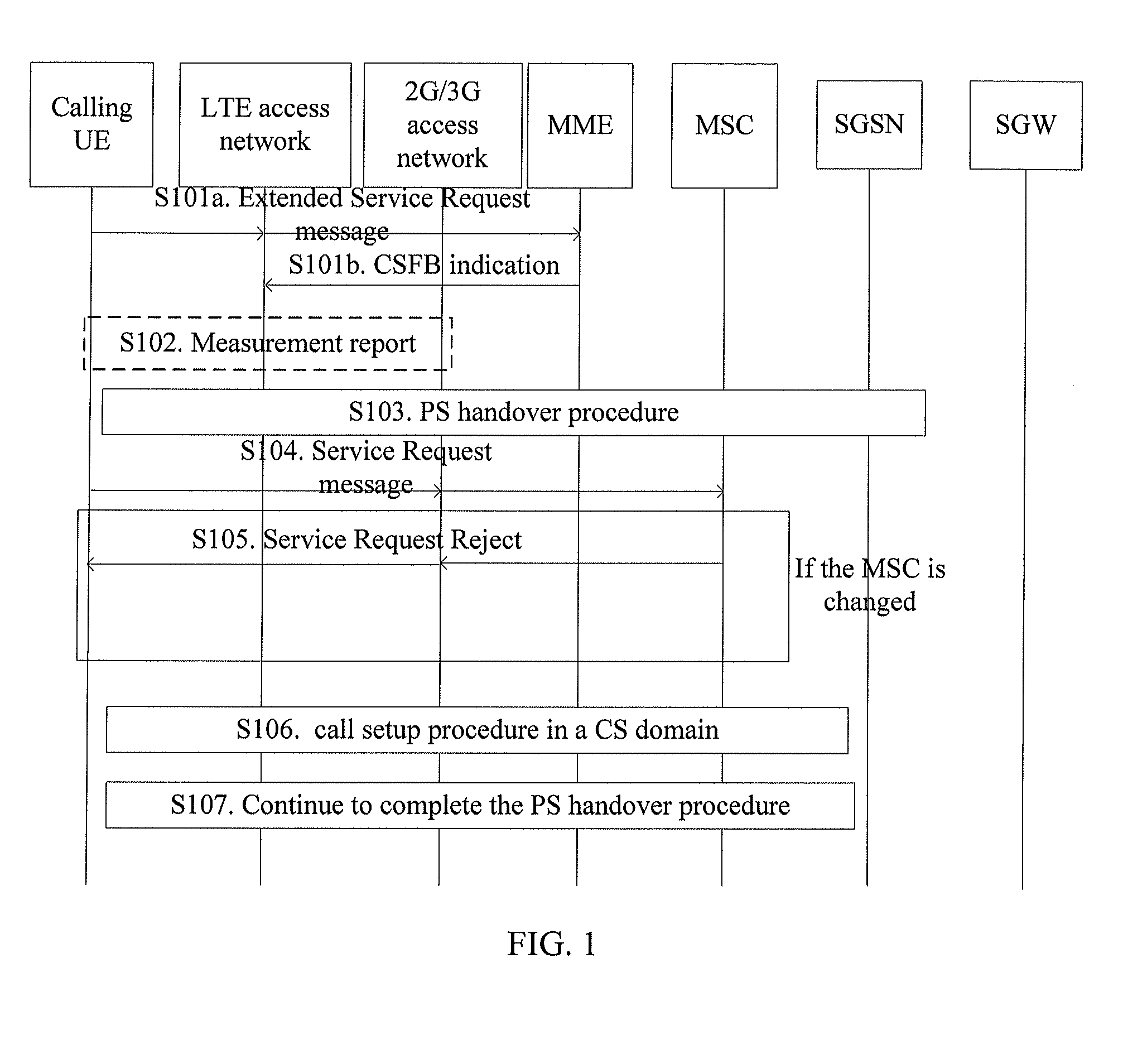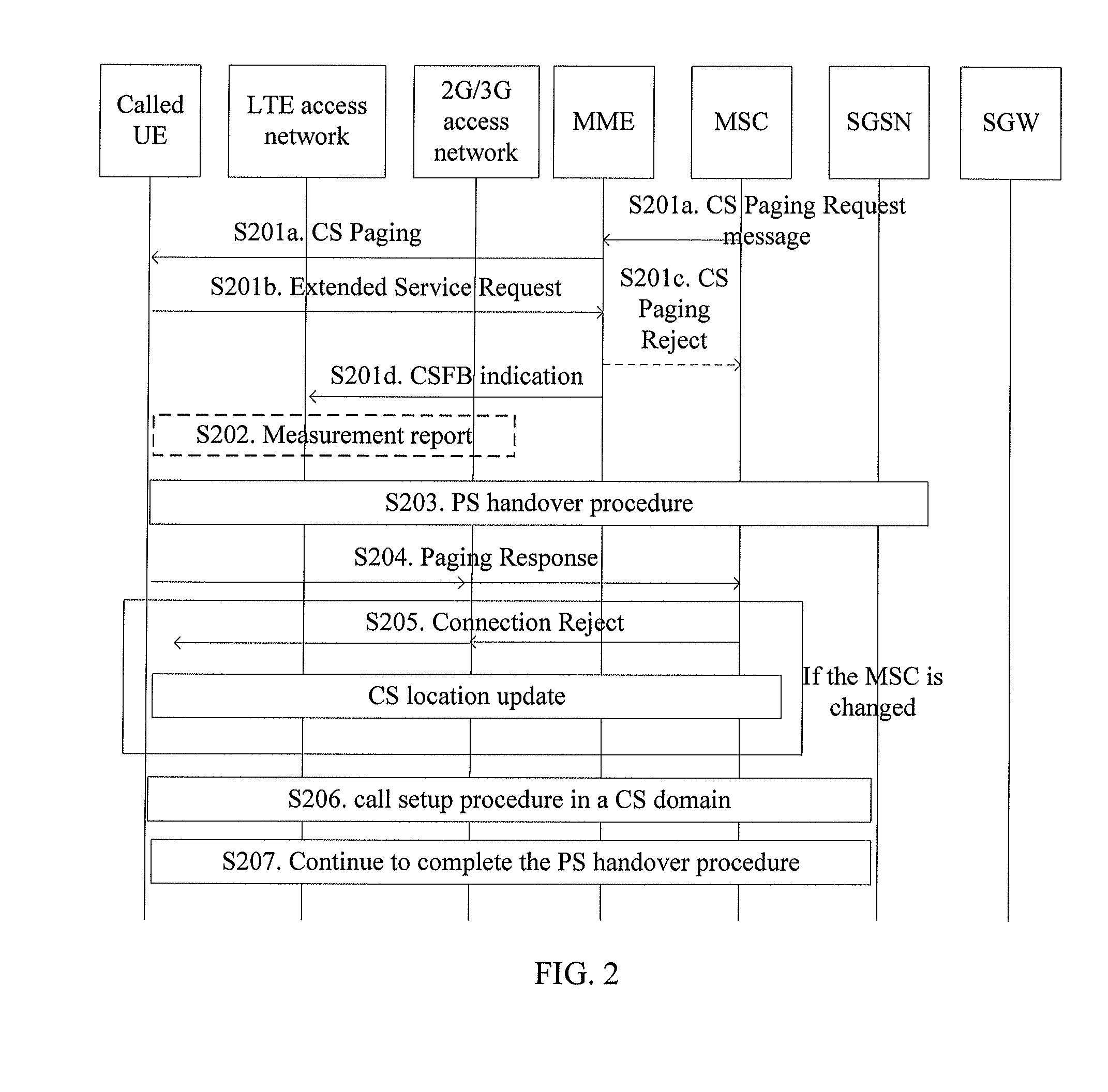Method, apparatus, and system for voice call fallback to circuit switched domain
- Summary
- Abstract
- Description
- Claims
- Application Information
AI Technical Summary
Benefits of technology
Problems solved by technology
Method used
Image
Examples
embodiment 1
[0183]As shown in FIG. 4, the processing procedure of an MME in a scenario where a UE is on the caller side and the caller initiates a call is described. The specific steps are as follows:
[0184]S401. An MME receives a Service Request message from a calling UE, where the Service Request message includes called number information of a voice call in a CS domain.
[0185]For example, the Service Request message sent by the UE to the MME may include a called number field that is used to bear called number information.
[0186]S402. The MME instructs an eNB to initiate CSFB handover.
[0187]S403. The MME receives a Handover Request message from the eNB, where the Handover Request message includes information required for CS handover.
[0188]In practice, the information required for the CS handover includes a target identity (ID). The target ID may be a radio network controller (RNC) ID or a cell ID. It is understandable that the meaning of the target ID is also applicable to other embodiments of th...
embodiment 2
[0209]As shown in FIG. 6, the processing procedure of an MSC in a scenario where a UE is on the caller side and the caller initiates a call is described. The specific steps are as follows:
[0210]S601. An MSC receives a PS to CS Handover Request message from an MME, where the PS to CS Handover Request message includes information required for CS handover and a called number, wherein the PS to CS Handover Request message is sent by the MME when the MME receives a Handover Request message from an evolved NodeB (eNB), wherein the Handover Request message is sent by the eNB when the UE sends a Service Request message to instruct the eNB to initiate a CSFB.
[0211]S602. The MSC sends an IAM to call a called UE according to the called number, obtains CS resource information prepared by a target BSS / RNS from the target BSS / RNS, and returns a PS to CS Handover Response message to the MME, where the PS to CS Handover Response message includes the CS resource information prepared by the target BS...
embodiment 3
[0217]In this embodiment, a UE is a calling UE, and a 2G / 3G network supports PS handover. The following describes the procedure for voice call fallback to a CS domain in a process where the UE initiates a call. As shown in FIG. 7, the specific steps are as follows:
[0218]S701a. A user wants to initiate a CS voice call. A calling UE is attached to an LTE network and is in an idle or active state. The calling UE sends an Extended Service Request message to an MME, where the Extended Service Request message includes called number information of a voice call in a CS domain.
[0219]S701b. The MME instructs an eNB that the call is an enhanced CSFB call.
[0220]The MME needs to confirm whether to initiate an enhanced CSFB procedure. The MME first judges whether the calling UE wants to initiate a CS voice call. The Extended Service Request message may carry type information of a service to be initiated. The specific service type may be voice call, SMS, or supplementary service. The MME also need...
PUM
 Login to View More
Login to View More Abstract
Description
Claims
Application Information
 Login to View More
Login to View More - R&D
- Intellectual Property
- Life Sciences
- Materials
- Tech Scout
- Unparalleled Data Quality
- Higher Quality Content
- 60% Fewer Hallucinations
Browse by: Latest US Patents, China's latest patents, Technical Efficacy Thesaurus, Application Domain, Technology Topic, Popular Technical Reports.
© 2025 PatSnap. All rights reserved.Legal|Privacy policy|Modern Slavery Act Transparency Statement|Sitemap|About US| Contact US: help@patsnap.com



